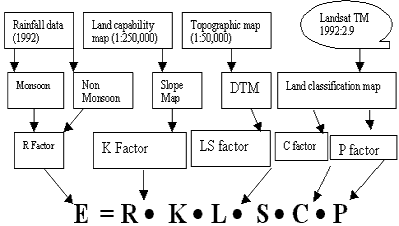For today's post I thought it would be useful and fun to go over an important tool for Geologists and especially Mineralogists to identify minerals. This tool is simply called an Interference Color Chart. This Interference Color chart was first developed by Auguste Michel-Lévy, a French Geologist, who was a pioneer in mineral classification through birefringence. Without going too much into a Geology university lecture, birefringence are colors we observe in a
thin section with a petrographic microscope that results from the differences in speed of the slow and fast light ray as they pass through a mineral.
The Interference Color Chart looks like this:
Now I know in my above picture everything is hard to see/read but you do get the idea of how one is set up. I do have a reason for picking this exact image. It just so happens (and I was very surprised to find it in a Google image search) that this is the same Interference Color Chart that we used in my Mineralogy course. German and all! The reason we used this German chart was my professor said this is the best out there. All the other ones are not accurate enough and are skewed, so we used this German one even though we all speak English. But it was kind of funny as she had to write the mineral name translations on the board which was also interesting. For example the mineral Feldspar was Feldspat, Olivine was Olivit, etc.
So how do you use this chart? Well, first off you optically observe a thin section under a petrographic microscope under cross polarization and observe any birefringence colors you may see. If you don't know the mineral you are looking at then you can find the color you are seeing under the microscope and compare it to the chart. However, you do have to take into consideration thickness of your thin section. Standard and well prepared thin sections are 30 microns which is the marked as the middle horizontal line on the Color Chart so that is where you should always be referring to. Sometimes parts of the mineral/thin section will be thinner or thicker and could be noted on the thin section slide itself. If this is the case you may want to look either above or below that middle 30 micron line.
Now I know it is slightly confusing as there are repeated colors on the Interference Color Chart, it is not all one rainbow spectrum. These are called orders. So from the left going right you have 1st order, 2nd order, etc. 1st order starts with the black on the far left and stops at the first red, 2nd order starts at that first red and stops at the second red, 3rd order the same, etc, etc. You always want to note the highest color order for the particular mineral you are observing. For example, note that it could be 1st order grey, or 2nd order blue-purple. Any descriptions are helpful in mineral observations and identification.





